Camping cutlery: what are and how to choose?
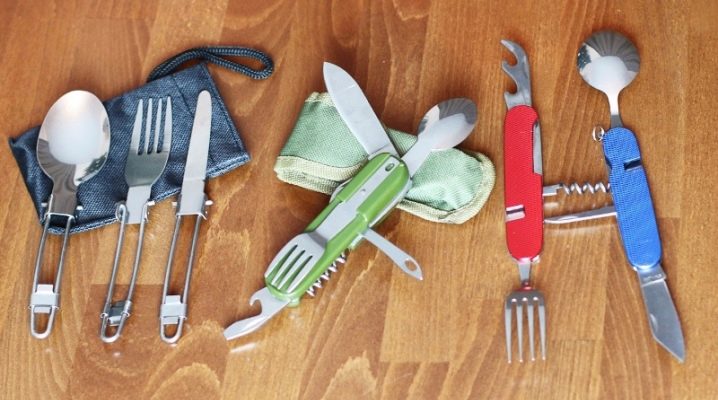
Modern manufacturers of goods for an active lifestyle have stepped far ahead compared to the last century. Today, to go hiking, you don’t have to sacrifice comfort, limit yourself to something, or carry a huge heavy backpack. Everything has become technological, light and convenient - clothes, equipment and even dishes. For example, camping cutlery is no longer weighty spoons and forks, but rather practical items made from optimal materials. Consider the main types, features and rules for choosing cutlery for tourists.
Varieties
First, let's talk about forks and spoons. We will consider knives separately, since such an item requires a little more attention. Travel appliances can be classified into several categories. Products have certain functions, are performed by domestic and foreign manufacturers from various materials.
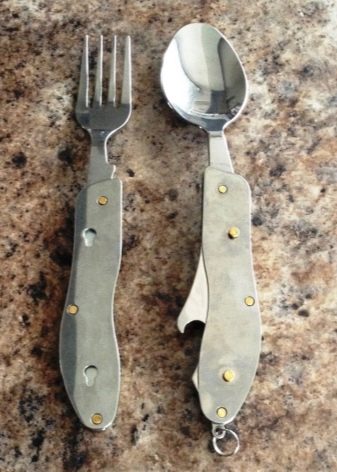
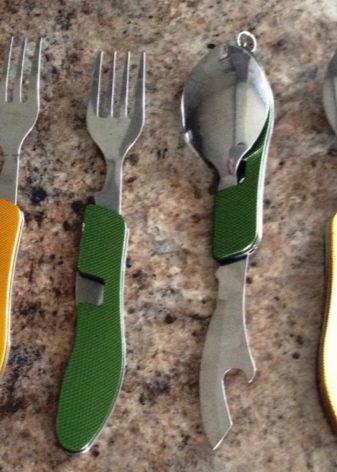
Functions
Since it is extremely important to reduce the weight and amount of equipment on a hike, all items should be as practical as possible. Therefore, often an ordinary spoon can simultaneously be a fork, an opener, and even a small knife. When choosing a multifunctional cutlery, you should remember that combined items usually have a number of disadvantages.
For example, even if a road fork has a cutting side on the side, you should not expect it to replace a full-fledged knife. Of course, it's better than nothing. However, they are unlikely to cut meat.
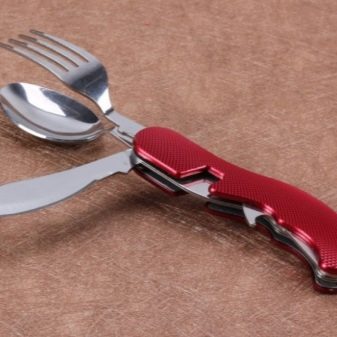

materials
This parameter should be given special attention, since the weight, strength and practicality of tourist cutlery directly depend on it. Consider the best options.
- Titanium. If it is important for you that the device is as light as possible, but at the same time does not break at the most inopportune moment, then choose titanium spoons and forks. Any climber or person who often travels with a backpack will certainly prefer this particular material.

- Plastic. Devices made from this raw material are characterized by minimal weight, low price, and availability. This is a great option for people who go on not too long hikes. But plastic devices have a number of disadvantages. In particular, such material is very fragile. The device made of plastic is easily damaged during transportation or accidentally melted from hot dishes or fire. In addition, plastic is not the most environmentally friendly material.
Its cheap varieties can even be toxic, so be as careful as possible when choosing.
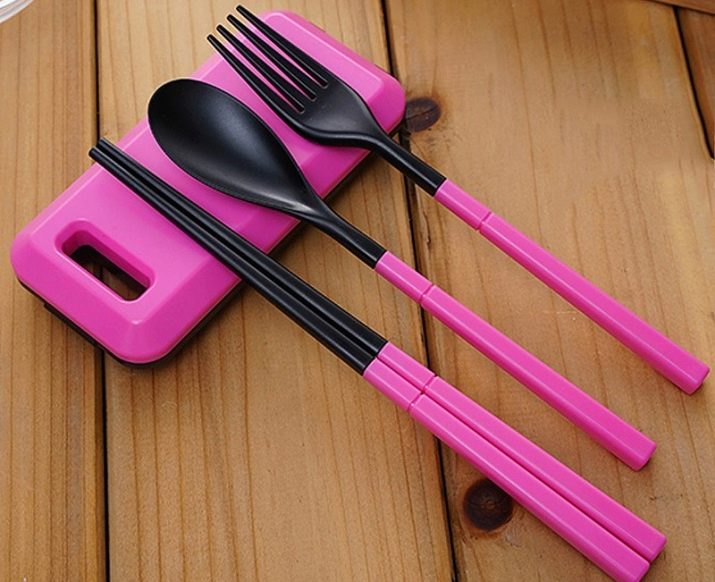
- Aluminum. It is excellent for making travel cutlery, as it is light in weight, strong enough and low in price. In addition, aluminum spoons and forks do not rust, which means that such devices will serve you for a long time.

- Stainless steel. Devices made of this material are also durable and affordable. However, they will weigh quite a lot, especially when compared with aluminum or plastic products.If this indicator is not too important for you, feel free to choose stainless steel spoons and forks.
However, you need to remember that they can cost more than plastic.

Equipment
Most often, cutlery items for hiking are sold immediately in a set. They can be connected to each other with a special carabiner, they are completed in a plastic case or a textile case. More expensive copies are presented in stores separately. Devices can be folding or full-sized.

Manufacturer
Today it is quite easy to find high-quality road devices from Russian, German and many other companies. We list a few specific brands that are worth paying attention to.
- MSR. This company produces light and reliable spoons, the handle of which is turned into a tool. For example, in the key for maintenance and repair of burners. This approach will certainly be appreciated by connoisseurs of practicality.
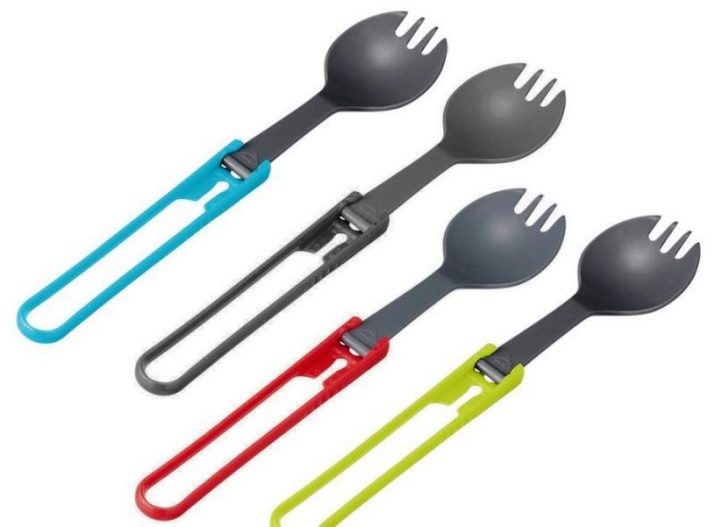
- Primus Sporck. Often tourists try to reduce the weight, the number of things and equipment to the maximum, which is reflected even in cutlery. This company took into account this trend and presented customers with a practical spoon-fork-knife. On one side of the handle - a full-fledged spoon, on the other - a fork. In this case, one prong of the fork is a knife. It's hard to imagine a more sophisticated technology.
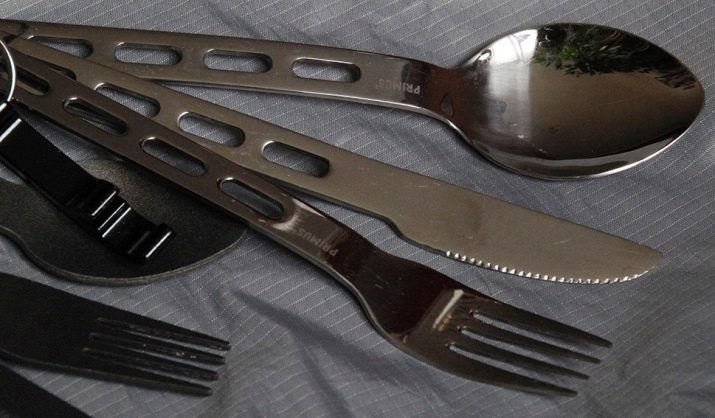
- Snow Peak. The manufacturer also produces spoon forks, but only in a slightly different format. The scoop of the spoon is equipped with special slots, which replace the usual fork.
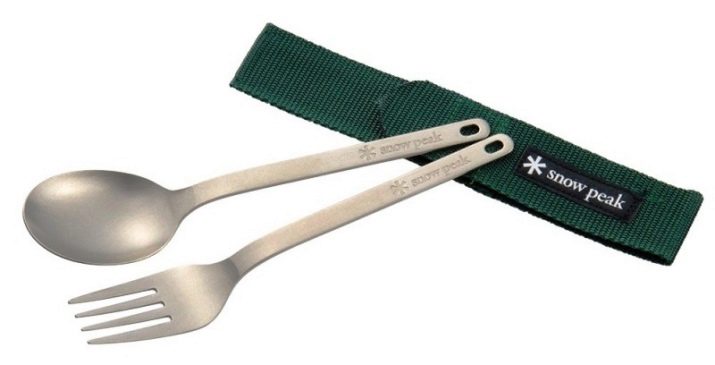
There are other good manufacturers of cutlery for tourists. Most often, forks and spoons are sold separately or sets of these two items. The knife is not always included in the kit, since most often the tourist already has a hiking cutter.There are many more requirements for this item than for a regular fork or spoon. Let us consider in more detail the features of choosing a tourist cutter.
Camping knife features
First of all, it is worth noting that not every knife can be taken with you on a trip so easily. After all, this is a real edged weapon. Of course, if you buy such an item in a good travel store, it already has a certificate confirming the safety of the product. If you got the knife from someone or bought it elsewhere, make sure it has a blade thickness of more than 5 mm and a length of no more than 9 cm.
Also remember that switchblade knives are considered melee weapons.

Tourist knives according to the type of design are folding and full-sized. Most often, hikers choose the first option, as it takes up less space and eliminates the risk of accidentally exposing the blade. However, the more complex the mechanism, the easier it is to break. So choose your folding blades carefully.
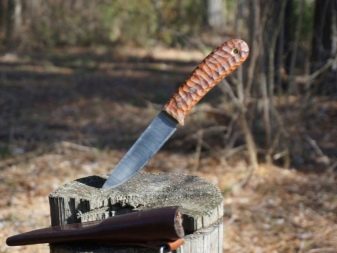

Blades are most commonly made from two types of steel: stainless steel and carbon steel. The first material will definitely not rust even with intensive use. However, it is not the easiest to sharpen and is less strong than carbon steel. The disadvantage of the latter is susceptibility to corrosion.
Also, knives differ in the type of sharpening, size, hardness and thickness of the blade, the shape of the handle. For hiking, it is best to choose medium-sized utility knives that do not have any specific purpose.
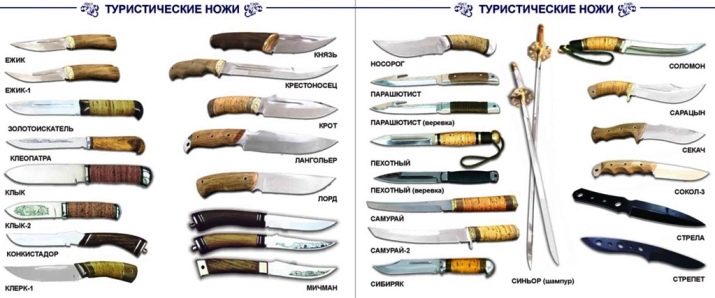
Selection rules
There are several general guidelines for choosing instruments.
- Consider the specifics of the trip. If you are not going to big mountains or ultralight hikes, it is not necessary to choose the most technologically advanced weightless items.After all, the cost is quite high, and at an ordinary picnic you definitely won’t appreciate the beauty of technology.
- Be attentive to details. The fewer of them, the better. For example, a folding spoon breaks much faster than a full-sized device made of the same material. Therefore, if it is not important for you to save a couple of centimeters in a backpack, you can not choose folding products.
- Look for a good store. Goods from well-known manufacturers are often counterfeited. Therefore, be sure to ask the seller for product certificates, especially for knives. And of course, do not take seriously offers to buy an authentic Swiss knife for 300 rubles. Good quality goods always have a corresponding value.
- Save smart. If you need a minimum of things for the upcoming trip, then choose lightweight cutlery wisely. For example, you should not buy too small or uncomfortable folding devices, they will be less convenient to use.


Do not forget that the material of the product must be of high quality and not too cheap. With the right choice of fork, spoon and knife for hiking will serve you for decades.
About what camping devices are, see the following video.




























